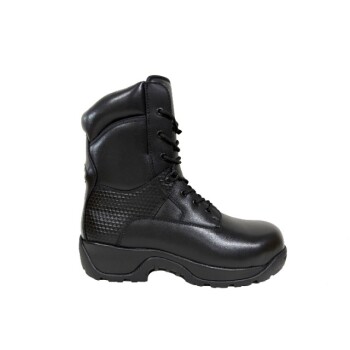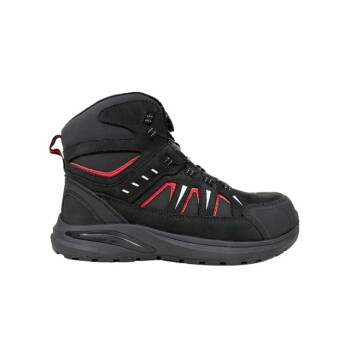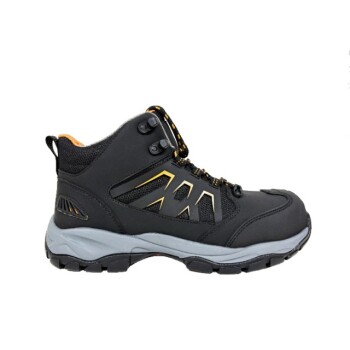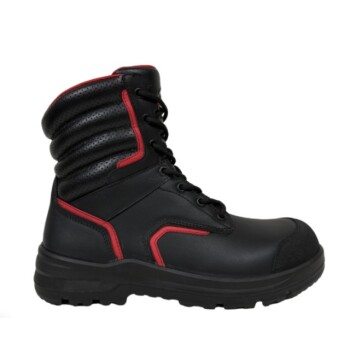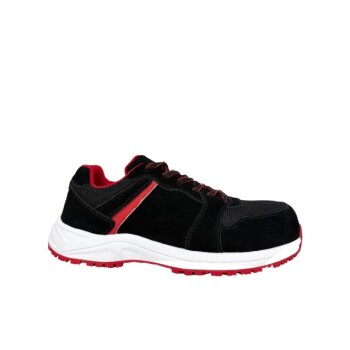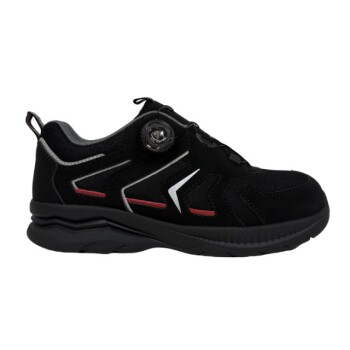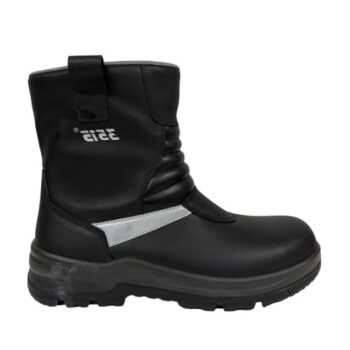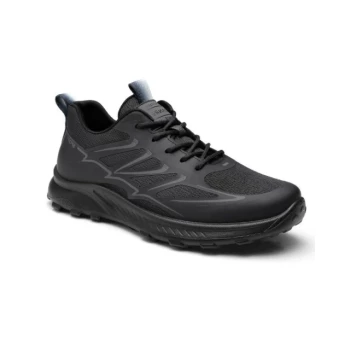While no footwear can be guaranteed as 100% "snake-proof," your most effective defense is wearing dedicated snake boots or combining sturdy, high-ankle leather boots with a pair of snake gaiters. This layered approach creates a physical barrier thick and tough enough to stop the fangs of most venomous snakes from reaching your skin.
The core principle is not to find a single invulnerable product, but to build a system of protection. A reliable defense combines a boot with a thick, durable material and sufficient height, supplemented by snake gaiters for the most comprehensive coverage of the lower leg.
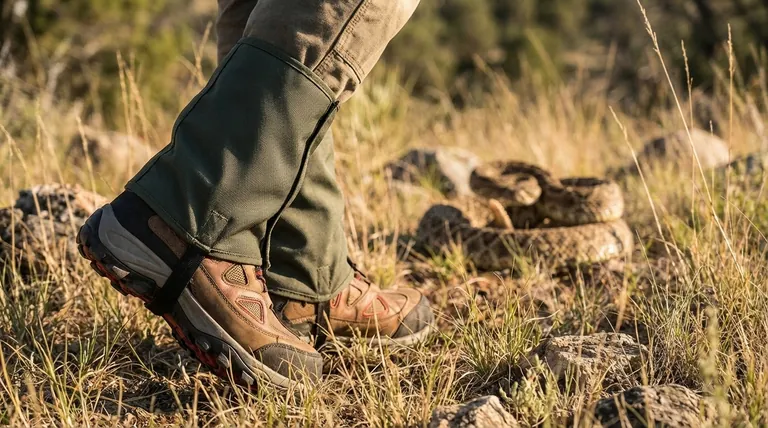
Understanding the Principles of Protection
To choose the right gear, you first need to understand what makes footwear effective against a snake strike. The goal is to prevent fang penetration through a combination of material, height, and fit.
Why Height Matters
Most snake bites occur between the ankle and the knee. Low-cut trail runners or hiking shoes leave this entire area exposed and vulnerable.
Footwear with a high shaft, such as jungle boots or heavy work boots, provides a crucial first line of defense by simply covering more of the target area.
The Role of Material Thickness
A snake's fangs are sharp but relatively delicate. They are designed to pierce skin, not thick, durable materials like heavy leather or dense synthetic fabrics.
The sturdier the boot's construction, the more likely it is to deflect or stop a fang from penetrating fully. This is why thin, breathable materials on lightweight shoes offer almost no protection.
The Importance of a Looser Fit
Having some space between your leg and the boot or pant leg can be surprisingly effective. This gap can cause a snake's fangs to get caught in the material rather than making direct contact with your skin.
Thick jeans or canvas pants worn outside of your boots add another layer that can help absorb or misdirect the force of a strike.
Evaluating Your Footwear Options
Different types of footwear offer vastly different levels of protection. Your choice depends on your environment and risk level.
Dedicated Snake Boots
These are the gold standard for protection. They are specifically engineered and tested to resist snake bites, using a combination of thick leather and puncture-resistant synthetic fabrics that extend up to the knee.
Heavy Leather and Jungle Boots
A solid second choice. Their high-ankle design and sturdy construction, particularly with thick leather, offer significant protection against smaller snakes and glancing strikes.
The Cowboy Boot Compromise
Cowboy boots are certainly better than sneakers due to their height and thick sole. However, they are not specifically designed for snake protection.
The top and side of the foot, known as the vamp, can be a vulnerable point, and their effectiveness depends heavily on the snake's size and the directness of the bite.
The Critical Role of Snake Gaiters
For those who don't want to invest in a dedicated pair of snake boots, gaiters offer a versatile and highly effective solution.
What Are Snake Gaiters?
Snake gaiters are protective guards worn over your pants and boots, typically running from the top of your foot up to your knee. They are made from puncture-resistant materials.
Providing Comprehensive Coverage
Gaiters directly address the most common strike zone—the lower leg. When worn over a sturdy boot, they create a nearly seamless shield covering the most vulnerable areas.
A Versatile and Cost-Effective Option
A key advantage is that you can wear gaiters over your existing sturdy hiking or work boots. This allows you to adapt your regular footwear for use in snake country without buying a specialized pair of boots.
Understanding the Trade-offs
Choosing protective gear always involves balancing safety with comfort and practicality. It's crucial to acknowledge the limitations.
No Gear is 100% "Snake-Proof"
Even the best gear has its limits. The size and species of the snake, the angle of the bite, and sheer bad luck can all play a role. Protection is about drastically reducing risk, not eliminating it entirely.
The Cost of Protection: Heat and Comfort
Thick leather boots and protective gaiters are heavy and hot. In warm climates, this can be a significant comfort issue, but it is a necessary trade-off for safety in high-risk environments.
The Need for Proper Maintenance
For leather boots to remain effective, the material must be kept in good condition. Regularly cleaning and conditioning the leather ensures it doesn't dry out and crack, which could create a weak point.
Making the Right Choice for Your Environment
Your selection of gear should directly match your level of risk and activity.
- If your primary focus is maximum protection in high-risk areas: Invest in dedicated snake boots or pair high-quality, heavy leather boots with full-coverage snake gaiters.
- If your primary focus is moderate protection for general outdoor activities: A pair of tall jungle boots or thick leather work boots offers a significant upgrade over standard shoes.
- If your primary focus is versatility and budget: Combining snake gaiters with your existing sturdy, high-ankle hiking or work boots is the most effective and adaptable strategy.
Ultimately, your best defense is combining the right protective gear with constant awareness of your surroundings.
Summary Table:
| Footwear Type | Protection Level | Key Features | Best For |
|---|---|---|---|
| Dedicated Snake Boots | Highest | Knee-high, puncture-resistant materials | High-risk snake country |
| Heavy Leather/Jungle Boots | High | Sturdy construction, high ankle | General outdoor activities |
| Boots + Snake Gaiters | Very High | Versatile, worn over existing boots | Budget-conscious & versatile protection |
| Cowboy Boots | Moderate | Thick sole, high shaft | Lower-risk areas, with limitations |
Need reliable, high-volume footwear for outdoor safety? As a large-scale manufacturer, 3515 produces a comprehensive range of durable boots and protective footwear for distributors, brand owners, and bulk clients. Our production capabilities encompass all types of safety shoes and boots designed for harsh environments. Let us help you equip your customers with the right gear. Contact us today to discuss your manufacturing needs!
Visual Guide
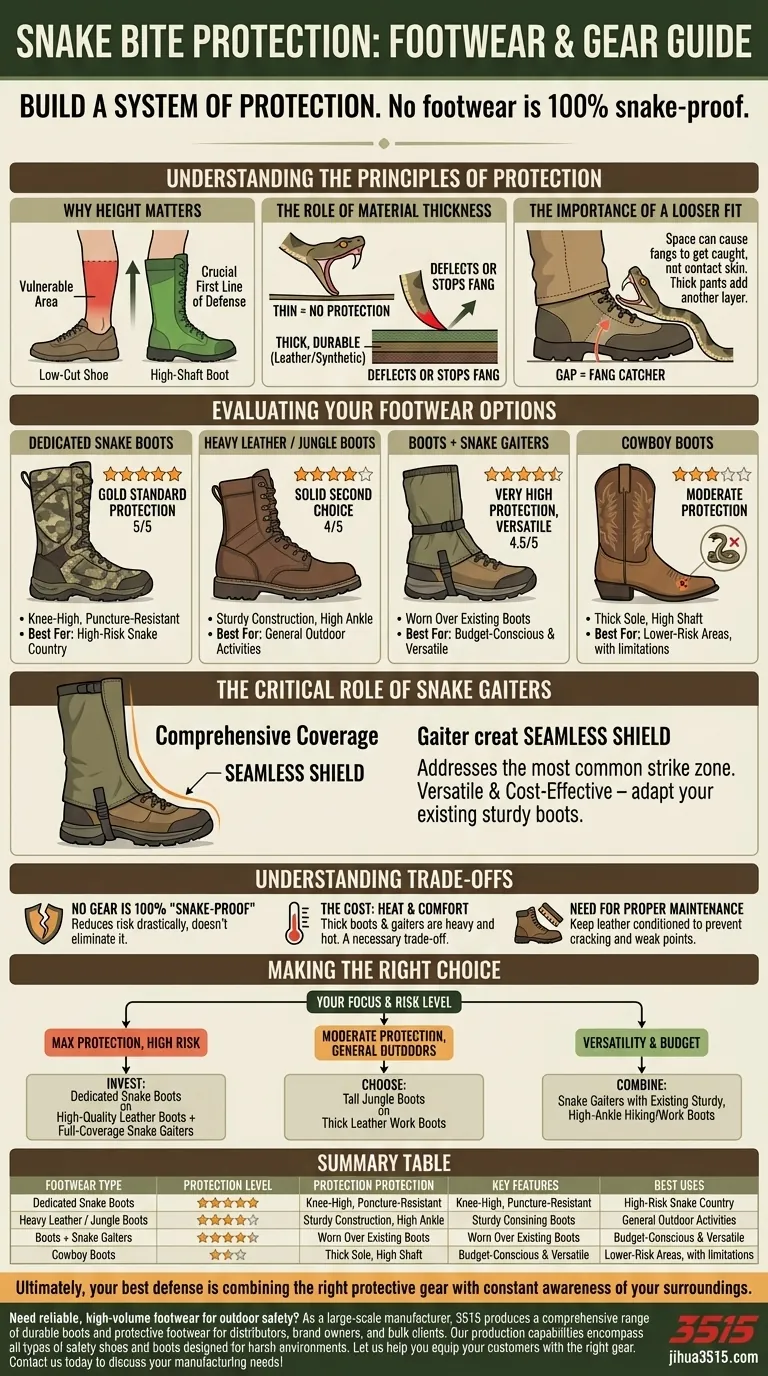
Related Products
- Safety Footwear Wholesale Manufacturer for Custom OEM/ODM Production
- Wholesale Safety Footwear Manufacturer for Bulk & Custom OEM Orders
- Advanced KPU Athletic Safety Shoe with Steel Toe Cap Anti-Slip Rotary Lacing System
- Premium Grain Leather Safety Boots for Bulk Supply
- Customizable Anti-Smash Safety Boots for Wholesale & Private Label Manufacturing
People Also Ask
- Is safety-toe as good as steel toe? Choose the Right Protection for Your Job
- Do snake bite boots work? Your Ultimate Guide to Effective Snake Bite Protection
- What are the differences between steel toe, composite toe, and alloy toe Wellington boots? Choose the Right Safety Toe for Your Job
- What are the cultural perspectives on wearing shoes in the house? A Guide to Home Etiquette & Hygiene
- What do heavy duty boots do? Protect Your Feet in Demanding Work Environments



